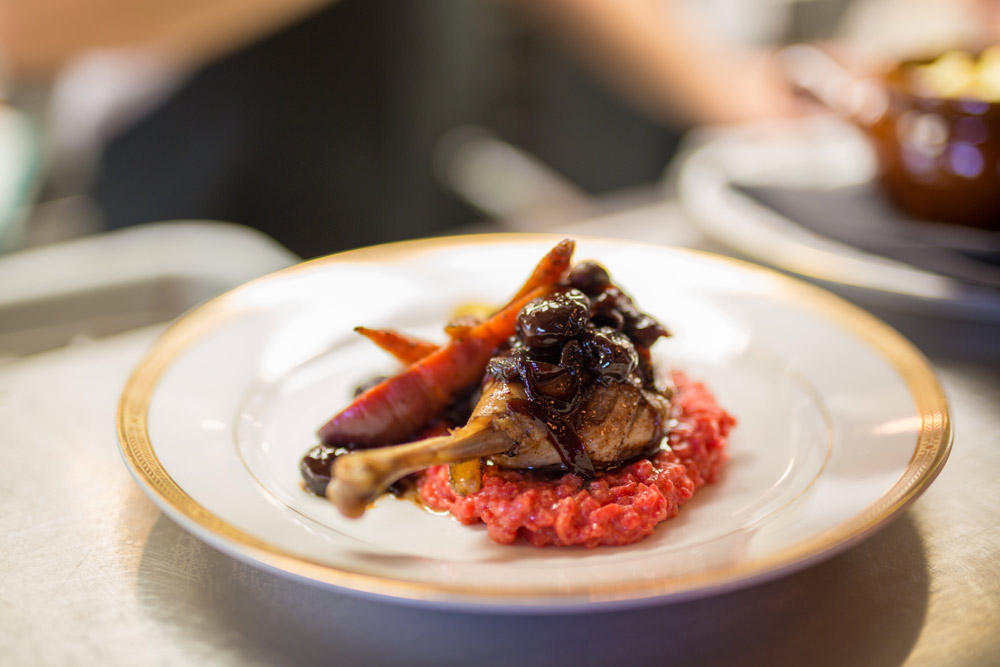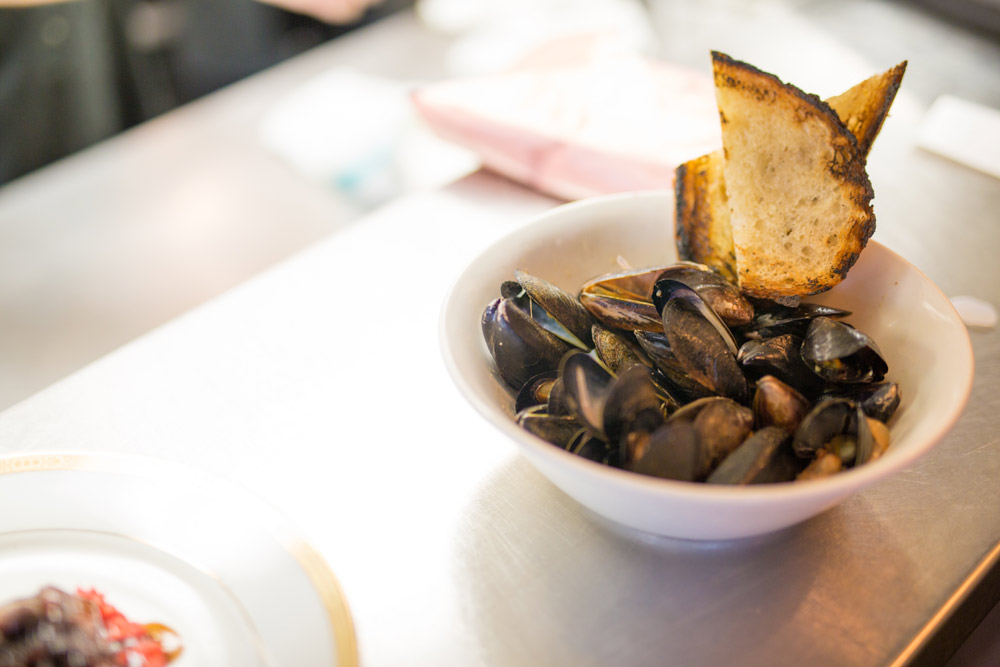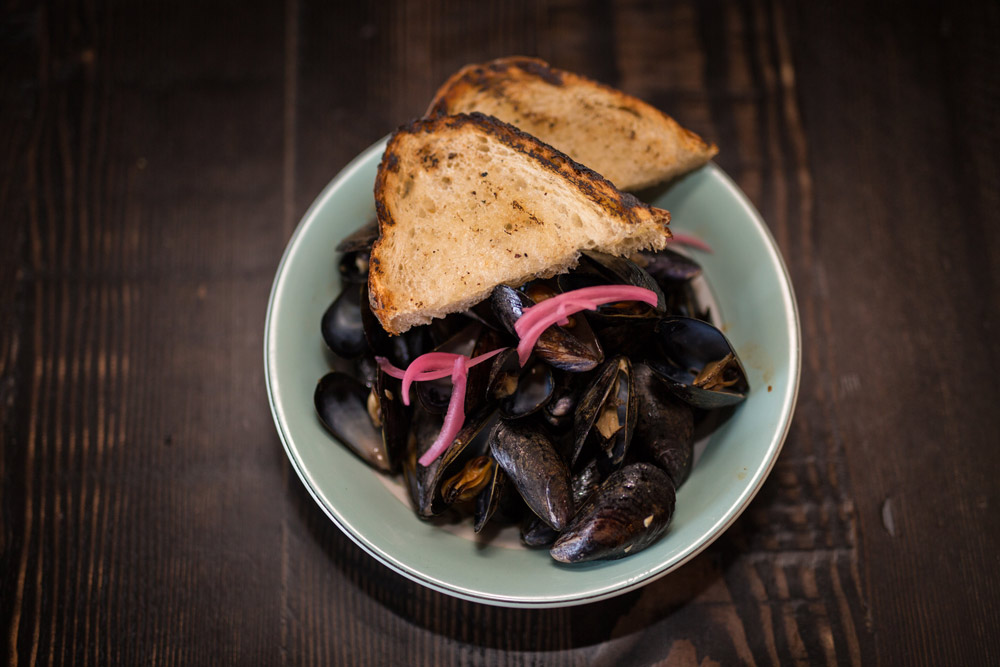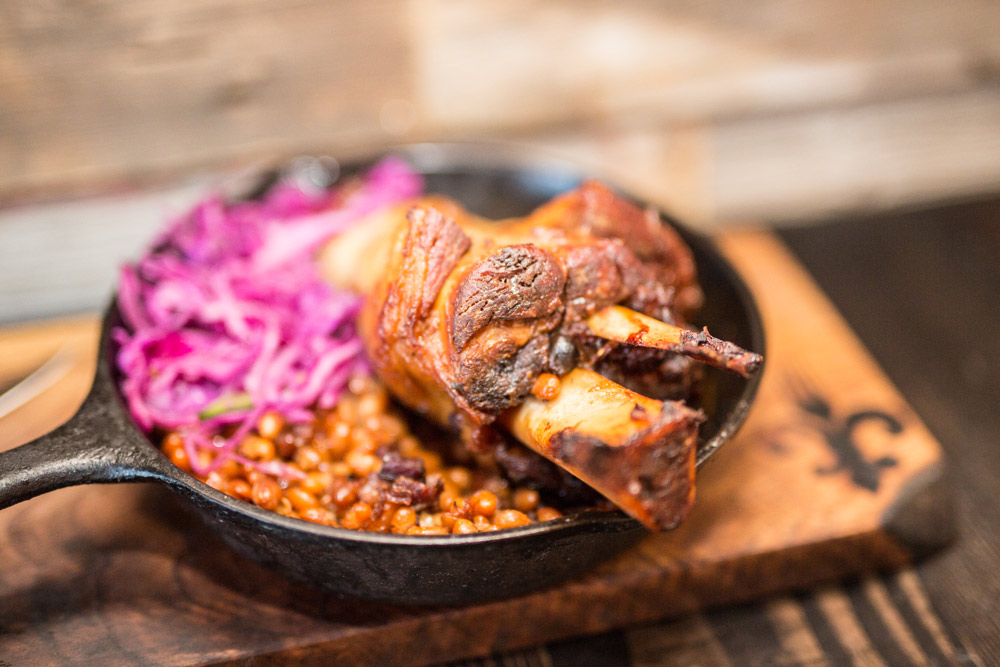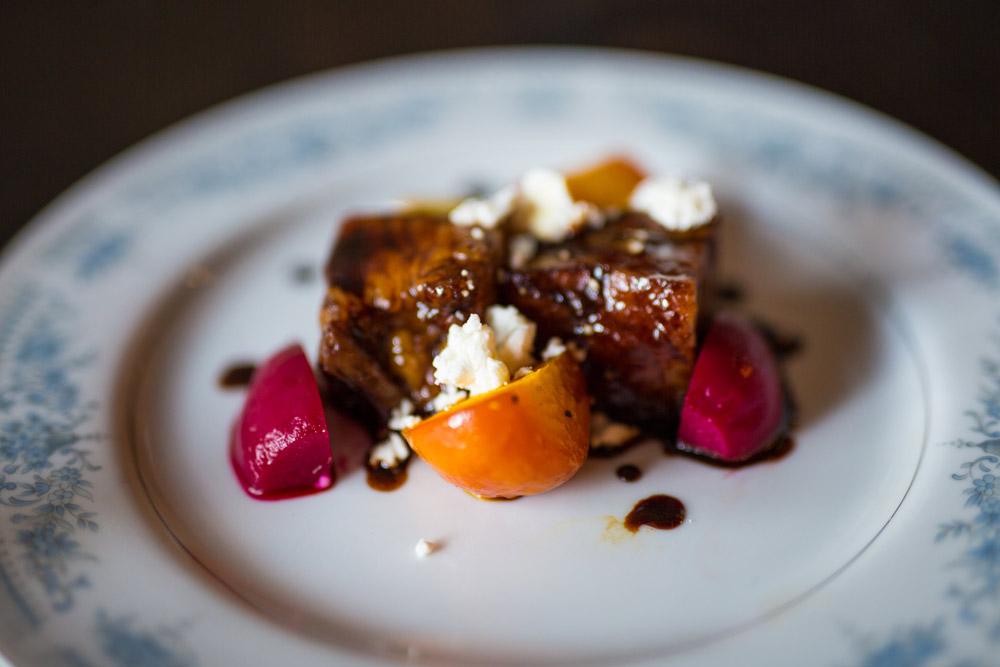Every year since our sourdough starter (aka, Mother / MOM) has been alive, we’ve done a mini celebration at the restaurant to pay tribute to the life she brings to Chartier. Our mother is the foundation of so many delicious goodies from the bakery (sourdough, cinnamon buns, donuts) - she is the tang in our toast, the bubbles in our bread, and the fluff in our stuff.
To mark her 8th birthday on Wednesday, December 21st, we’ll be selling a wee piece of mom for you to experiment at home with in exchange for a $5 donation to the Beaumont Nisku Christmas Elves. We felt that this gesture embodies one of the best qualities about mothers … care and generosity. Stop by anytime after 10am on December 21st pick one up (though limited quantities will be available on a first come first serve basis).
We’ve included the “Beginners Guide” to our mother below, so you know what to do with her - and so you can see the love and care that goes into making the perfect loaf of sourdough :)
A bit about Mother….
Sourdough is a bread product made by a long fermentation of dough using naturally occurring lactobacilli and yeasts. In comparison with breads made with cultivated yeast, it usually has a mildly sour taste because of the lactic acid produced by the lactobacilli.
A sourdough starter (or mother) is a pre-ferment made from flour and water. The purpose of the starter is to produce a vigorous leaven and to develop the flavour of the bread. The oldest sourdough starter is believed to be 122 years old, about 40 years older than its Newcastle owner, Lucille.
Our team started mother 8 years ago in the hopes that it would develop and evolve with the restaurant throughout the years. Our bake team feeds her twice daily, and over holiday breaks she is split between chefs and brought home to ensure she’s cared for over the holidays.
Working with mother is 2 parts science mixed with 1 part artistry and 1 part math - balancing environmental factors (such as heat and humidity) with meticulous measurement (of ingredients, time and temperature). She isn’t just a part of the Chartier Family - she is the matriarch of our team and the gatekeeper to a successful service.
A beginner’s guide to working with mother…..
For anyone that picks up one of our starters, here is a “Beginners Guide” to taking care of it, put together by our amazing Chef de Boulangerie, Spencer Berge. The instructions have been modified from their original version to make 2 loaves instead of just 1 (if you’re going to the trouble, may as well make enough to share with a friend or neighbour!)
Tools/Ingredients Needed
All Purpose Flour
Whole Wheat Flour
Rice Flour (can also use gluten free flour)
Medium sized kitchen bowl (or banneton basket)
Linen cloth
Cast Iron Pot/Combo Cooker or Pizza Stone
Spray bottle filled with cold water for steam generation or ice cubes + empty bake sheet placed at bottom of the oven
Bread Lame for scoring bread or other sharp blade
Thermometer
Tall Clear containers approximately 1L size
Plastic bench scraper (to get dough out of bowl easily/ to clean counter)
Heatproof oven mitts
Refreshing/Feeding the Starter
(The Starter is the microbial culture you continuously “feed” so that it is high in microbes & good bacteria so that is is ready for when you are prepared to make bread. Feel free to substitute any other fun name for your starter; Little Bread Rising Hood, Carrie Breadshaw, Bread Pitt, Bob)
Sourdough Starter Recipe
Starter 40g (aprox 1.5 tbsp)
White Flour 100g
Water @ 35C 100g
Refresh/Feed Starter once every 12 hours. (Discard remaining unused Starter). It is best to use a tall clear container so you can see the growth activity. It is helpful to use a marker to mark where it was at the feeding and where it is at the next feeding. A strong healthy starter should triple in volume when maintained daily. The starter can also be fed, allowed to sit at room temperature for 1 hour then placed in the refrigerator to “sleep”. When ready to “wake up” the starter, bring to room temperature and allow for approximately 3 feedings before using to make the levain.
Example schedule; Feed at 6 pm in the evening and 6 am the next morning. The Starter is ready to be used for bread making right before the next feeding (ex; 6 am or 6 pm). That is the peak level of microbial activity that you want when you use it to make the levain.
*NOTE: The starter is the main sourdough culture you regularly feed to keep alive. The levain is created from the sourdough starter and mixed 12 to 16 hours before the final dough is made that you are planning to bake.
Store on the counter at room temperature to grow. It should triple in size when it is strong, the first feeding may not be that large.
Making the Levain
(begin 12 to 16 hours before you want to mix your sourdough) Levain is a pre-fermented portion of ingredients from the dough you will be mixing later.
Starter 20g
Water 26C 256g
White Flour 262g
Whole Wheat Flour 16g
Combine starter and water in a tall clear container (to fit at least 1 L). Add in the flours and combine well.
Store on the counter at room temperature.
Sourdough
Levain 554g
1st Water @ 35C aprox 280g
White Flour 520g
Whole Wheat Flour 30g
2nd Water 20g
Salt 10g
Using stand mixer (or by hand in a bowl) add 1st water, levain and flour to mixing bowl. Mixing on lowest speed for about 2 minutes (or combine with hand), just to combine. It will not look smooth, it will be shaggy. Cover with saran wrap or a damp cloth. Set a timer for 20 minutes or up to 1 hour for autolyze period. (strengthens the gluten structure) Combine 2nd water with salt and set aside.
After autolyze, on the lowest speed add the water and salt and mix for aprox 3 minutes.
Let dough rest for 2 minutes without mixing.
On 2nd speed mix for aprox 3 minutes.
Allow to rest for 1 minute.
Check for gluten window by taking a piece of the dough and lightly checking how well it holds together while you stretch it. If it rips easily, mix another couple minutes. Let rest and check again for strength.
Move dough to large oiled container. Lift, stretch and fold the top of the dough over towards the bottom half. Turn bowl 90 degrees and repeat folding method until it looks smooth in the bowl. Check temperature of dough, it should be about 28C. If it over 30C put in fridge for a few minutes until it comes down. If too cold (less than 26C, place in slightly warmed oven for a few minutes.
Let sit at room temperature to ferment for 2 hours. Every half an hour give a fold: lift + stretch one end of the dough towards the opposite side, turn bowl 90 degrees and repeat until all 4 sides have been stretched and folded in. This builds strength.
After the fermentation time, pour dough onto lightly floured table and shape into ball. Let sit for 20 minutes while covered to relax. Prepare a medium sized bowl with the linen draped in. Make a mixture of white flour and rice flour in 50/50 ratio. Dust this over the bowl. Then shape once more the dough into a slightly tighter ball and place into bowl. Cover with saran wrap.
Leave dough to proof for approximately 1 hour at 30C. Check dough temp with thermometer, If dough is cold, lightly warm oven and allow to proof inside. If not baking the same day, you can now place the bread into the refrigerator until the next day to be baked.
Not Baking the Same Day: Proof loaf for approximately 1 hour at room temperature or until slight noticeable proof and then immediately cover lightly with saran wrap (or plastic hair cap) and then refrigerate for at least 8 hours or up to 1 day. Should be fully proofed after this time and can go immediately into the oven.
Same Day Baking: proof until nearly doubled in size and dough leaves a slight impression when gently poked. The dough should hold the impression but still bounce back slowly. If the impression doesn't bounce back it is over proofed. Dough is now ready for the oven.
OPTIONAL for same day baking: Once dough is ready to be baked, place in refrigerator for approximately 20 minutes to chill the dough. This makes scoring the dough much easier and cleaner looking, but is not necessary.
Baking
Preheat oven to 500F with cast iron pot/combo cooker inside (or pizza stone). When oven is ready carefully bring the cast iron pot out and gently flip the dough onto the bottom of the pot. Using the bread lame, score the dough (thin sharp cut)
Place lid back on cast iron pot and return the pot to the oven.
Immediately drop temperature to 450F. Bake for 20 minutes. Then remove cover. Continue baking for aprox 15 to 20 minutes until nicely browned. Bread is baked when it feels light to pick up and has a hollow sound when tapped on the bottom.
For pizza stone: gently flip bread onto thin cutting board topped with a piece of parchment paper. Score the bread and gently lift the from the parchment paper onto the pizza stone inside the oven. Immediately spray the oven/loaf with the water bottle taking care not to drench the loaf in water. Close oven door immediately. Or toss approximately 1 cup of ice cubes on bake sheet at the bottom of the oven to create steam.
Eat and ENJOY!



